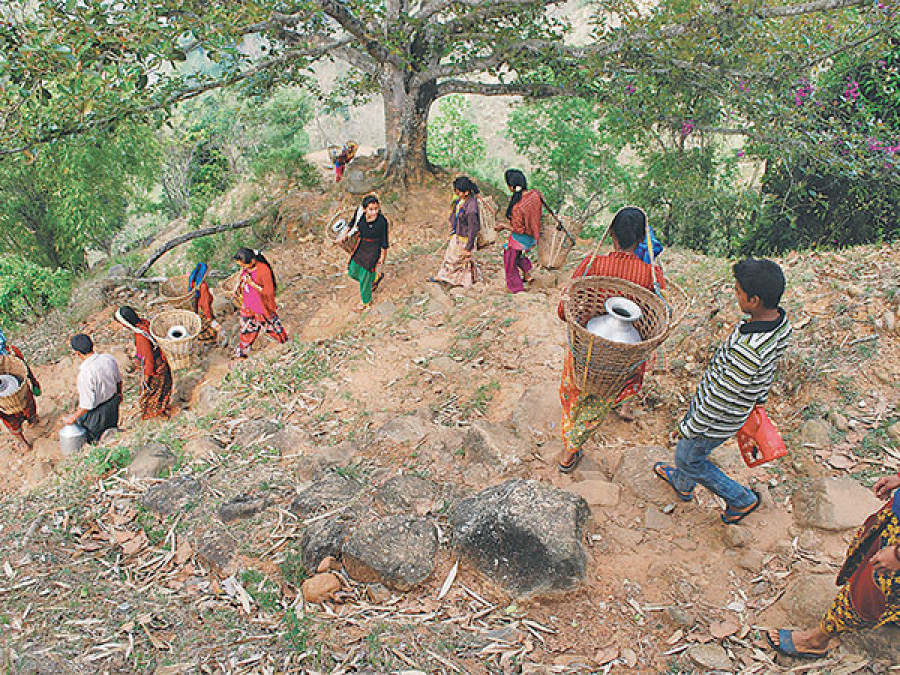National
Drinking water shortage hits remote Dhading village
The perennial drinking water problem in Salyantar VDC of the district has further compounded after the Great Earthquake.
Harihar Singh Rathour
After four water sources and reservoir tanks were damaged in the April 25 earthquake and subsequent aftershocks, some 8,000 residents of the VDC are reeling under acute water shortage. Drinking water project had been initiated in the village in 1976 by installing 80 taps in 19 settlements in the VDC. Due to rapidly growing population, water from the project is currently supplied to 700 households in wards 7, 8 and 9 while a new project was established in 1985 for other areas. But as the main pipeline of the new project was swept by landslides after the Great Earthquake, residents in wards 1 to 6 in the VDC are facing severe water shortage.
“As the four water sources in Aginchok were damaged and receded 3 kilometres down to Aankhu Khola River, there has been a serious drinking water crunch in the VDC,” former VDC chairman of Salyantar, Fadikanta Chatkuli, said. “As all joints in drinking water pipes have been broken, water cannot be pumped to the main tank.”
A water reservoir established in Siktar-3 for 700 households developed cracks due to the recent landslides triggered by the earthquake. “Not even half of the reservoir, which has a capacity of holding 48,000 gallons of water, can be filled now,” Prem Narayan Shrestha, a local who has been given the responsibility to look after the tank, said.
The severe water shortage has also affected livestock in the district. Owing to this reason, the locals have no option but to take their livestock o Mulpani River, Aankhu Khola River and Budhi Gandaki River for water. Meawhile, a small stream near Budhi Gandaki is supplying water for residents of ward no 5. Water sources on the hillsides have also begun to dry up due to the hot weather.
Some 1,600 households of Darai and Kumal settlements of wards 1 to 4 draw water for daily consumption from only three taps that have been installed nearby their place. “It takes four to six hours to ferry water from the
water taps to our houses,” Kalu Darai, a housewife in Argauta of Salyantar-4, said. “We have to send our kids ahead of us to stand in the queue for water.”




 29.12°C Kathmandu
29.12°C Kathmandu-(2).jpg)















